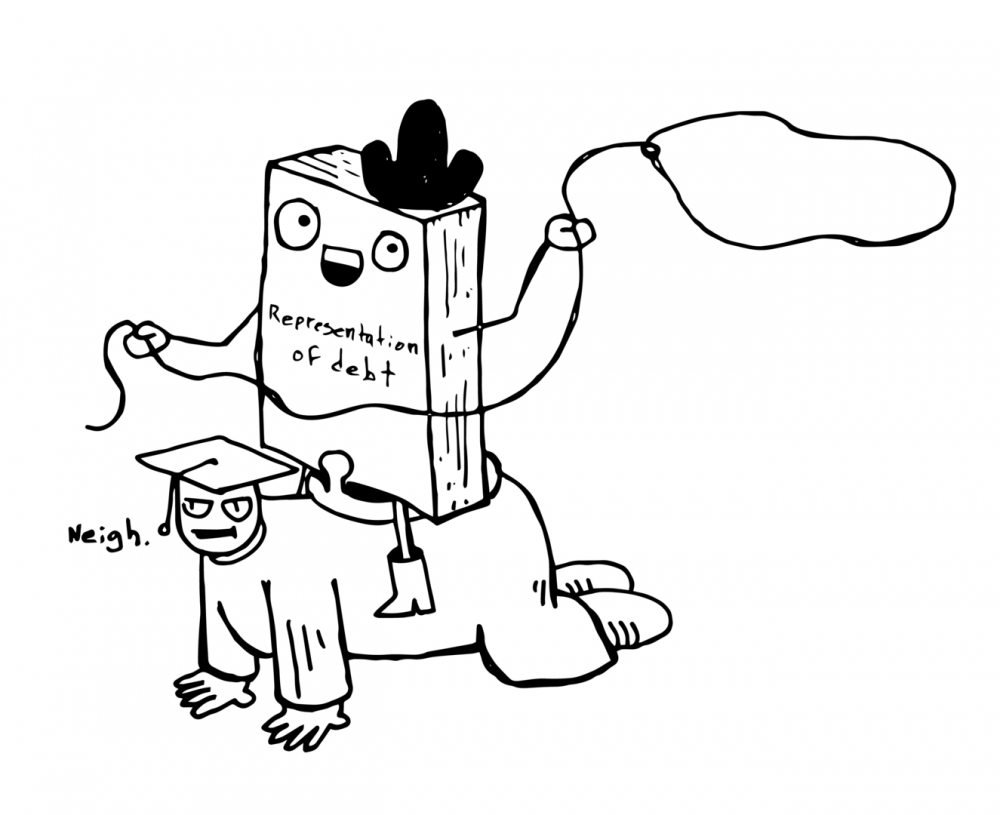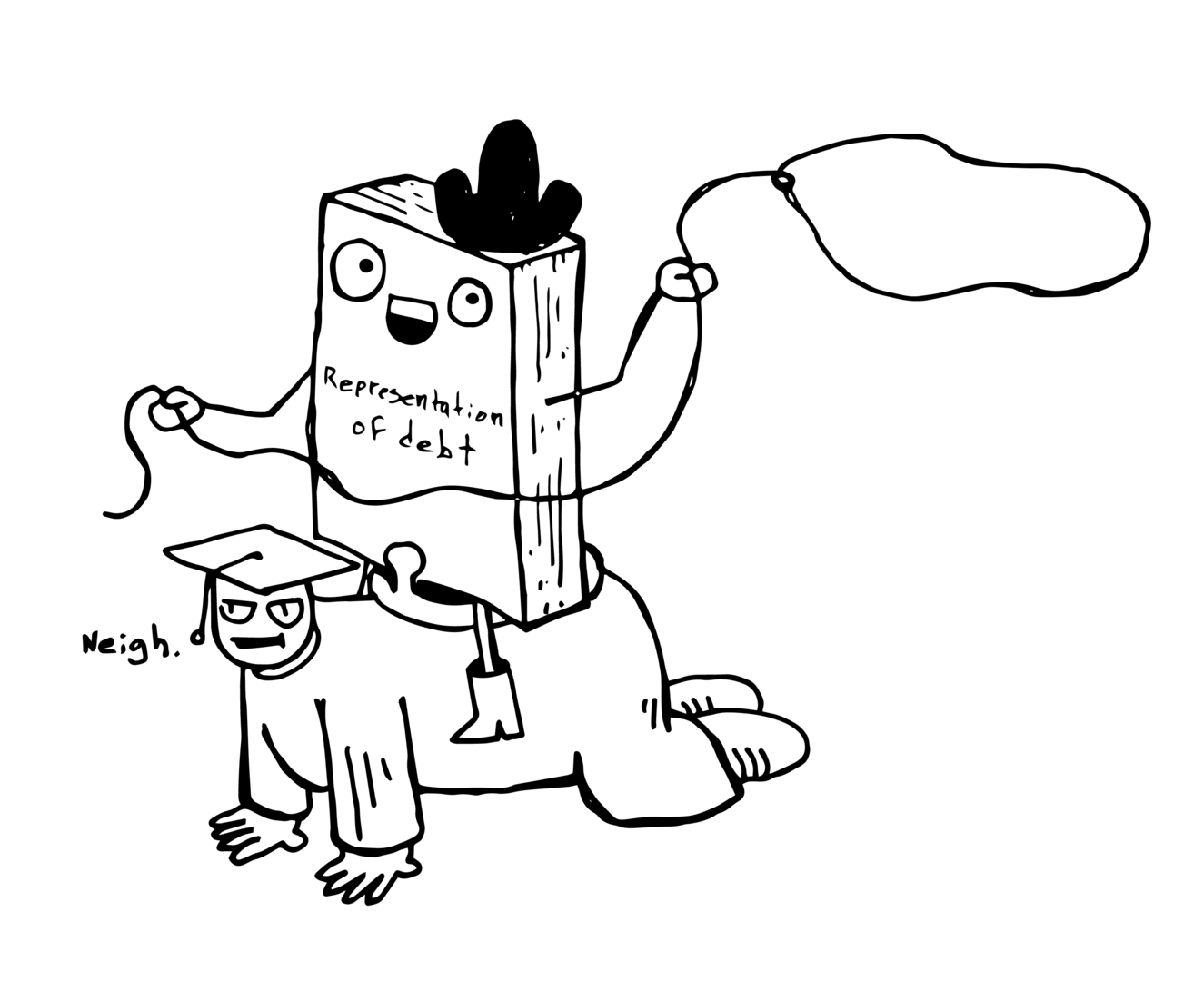Canadian students owe $28 billion to all levels of government. It might be time to reevaluate the value of education, or the burden of its costs.
According to Statistics Canada, tuition for undergraduate programs of Canadian full-time students, on average, was $6,571 in 2017/18, which is up 3.1 per cent since the previous academic year.
A petition was started by the Canadian Federation of Students (CFS) calling for student loan interest charges to be eliminated. “We have a debt crisis on our hands,” the petition states.
The CFS petition claims that the federal government uses interest fees on student loans as a source of revenue — approximately $862.6 million was made in revenue from the Canadian Student Loans Program (CSLP) this year.
Along with their debt, students have an unreliable job market and unstable housing market to look forward to.
The petition notes that the rate charged on Canada Student Loans is prime plus 2.5 per cent. (The prime rate is the interest rate Canada’s major banks set for variable loans and lines of credit — it’s based on how much it costs banks to borrow money.) Yet prime plus 2.5 is higher than many mortgage rates.
“It doesn’t have to be this way. If the federal government can issue interest-free loans to Bombardier, they can also give them to students,” the petition states.
Eliminating debt is a good step forward for students, but it’s bad business. Why not offer tuition-free education for all Canadians instead? Norway does it. The small northern country, seven times smaller than Canada, offers tuition-free education. Many European countries offer this service to their citizens.
The current Liberal government has had to write off $200 million in student loans, according to the National Post. It’s the third time in the past four years that the government has had to do so because of bankruptcy, the six-year legal limit on collection, and debtors who just can’t be found.
That’s millions in losses. But just peanuts considering the way Canada blows money.
Martin Lukacs, writing for the Guardian said: “It would be hard to invent a more destructive ritual of national self-punishment,” referring to Canada’s oil economy. The reality is the tar sands are exploited — not by nature of the industry but entirely because Canada allows it. According to National Resources Canada, the country’s energy sector accounts for seven per cent of Gross Domestic Product (GDP). To reuse a comparison, Norweight’s oil and gas accounts for 22 per cent of their GDP.
Wikipedia’s “List of countries by proven oil reserves” puts Canada third in world rankings, behind Saudi Arabia and Venezuela respectively. Norway ranks 21.
What about the problem of oil use? Norway already attains 99 per cent of their electricity from renewable resources; Canada, 66 per cent. The real environmental disaster of the tar sands is the crude attempt to consider profit efficiency.
Not to say that oil is the only way to fund tuition, but Ottawa seems pretty set on seeing it flow from the sands. No matter how tuition is lowered, national tuition-free education is in the university’s favour.
According to a study by Giuseppe Migali, an assistant professor in economics, Lancaster University, tuition raises were linked to dropout rate. With hikes, more students drop out.
According to the study, “Are Student Employment and Academic Success Linked?” by Carleton University and the Canada Millennium Scholarship Foundation, although working a small number of hours didn’t seem to be harmful for students, working “too much” has a negative influence on success.
Most universities create strategic enrollment management plans (SEM) to encourage enrollment increases. These SEMs should include a major emphasis on lobbying the government to cover tuition. Post-secondary education should be highly subsidized if not entirely paid for. Canada has the ability to do so; not providing this kind of service is ignorance.
Obviously moving towards reduced-tuition or tuition-free education isn’t as easy as waving a stick. The point is that it’s doable and it would be nice to see Trudeau’s government do something tangibly good for the next working generation.
 Illustration: Caleb Campbell/The Cascade
Illustration: Caleb Campbell/The Cascade


